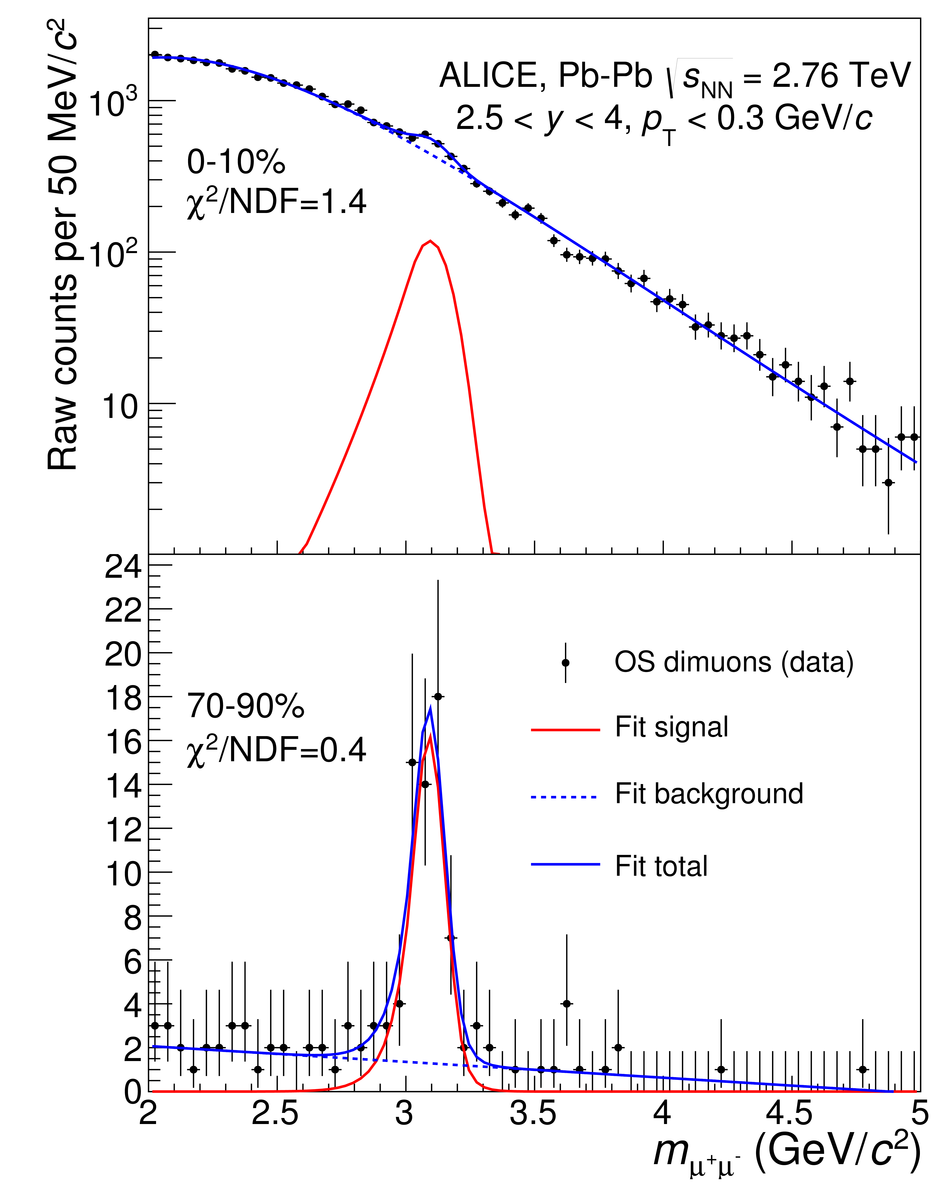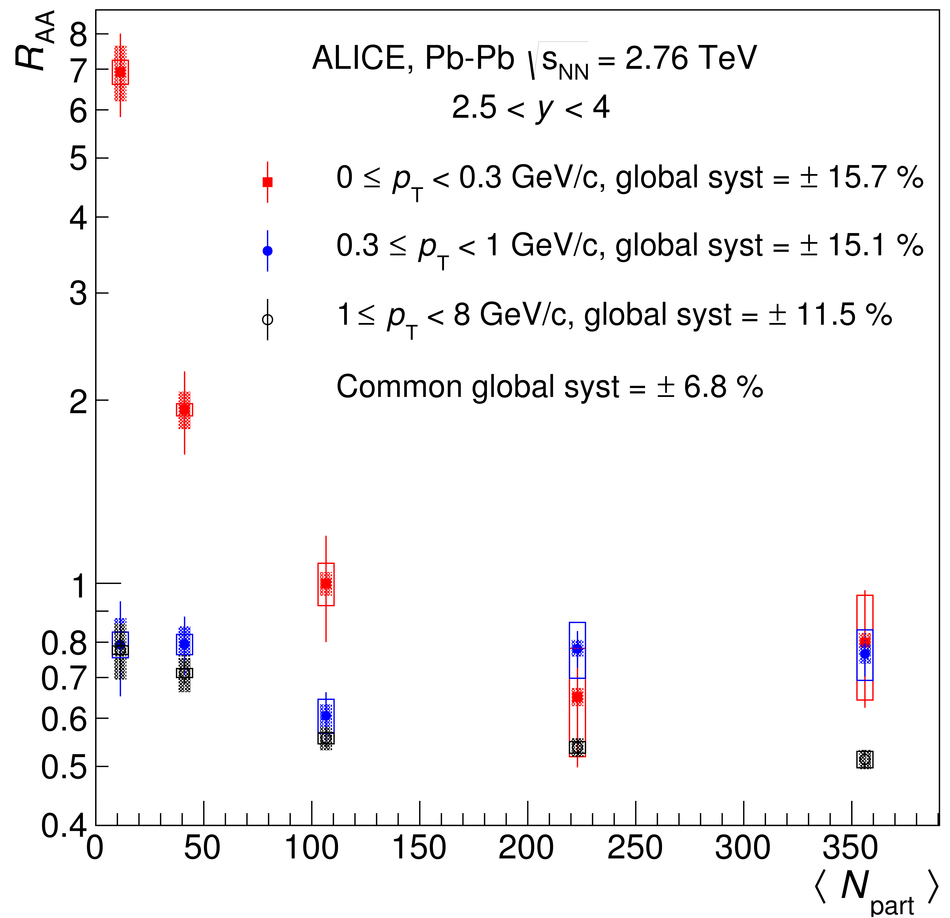We report on the first measurement of an excess in the yield of J/$\psi$ at very low transverse momentum ($p_{\rm T}<~ 0.3$ GeV/$c$) in peripheral hadronic Pb-Pb collisions at $\sqrt{s_{\rm NN}}$ = 2.76 TeV, performed by ALICE at the CERN LHC. Remarkably, the measured nuclear modification factor of J/$\psi$ in the rapidity range $2.5<~y<~4$ reaches about 7 (2) in the $p_{\rm T}$ range 0-0.3 GeV/$c$ in the 70-90% (50-70%) centrality class. The J/$\psi$ production cross section associated with the observed excess is obtained under the hypothesis that coherent photoproduction of J/$\psi$ is the underlying physics mechanism. If confirmed, the observation of J/$\psi$ coherent photoproduction in Pb-Pb collisions at impact parameters smaller than twice the nuclear radius opens new theoretical and experimental challenges and opportunities. In particular, coherent photoproduction accompanying hadronic collisions may provide insight into the dynamics of photoproduction and nuclear reactions, as well as become a novel probe of the Quark-Gluon Plasma.
Phys.Rev.Lett. 116 (2016) 222301
HEP Data
e-Print: arXiv:1509.08802 | PDF | inSPIRE
CERN-PH-EP-2015-268



